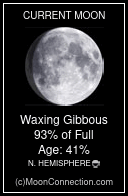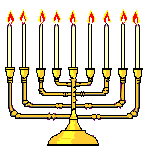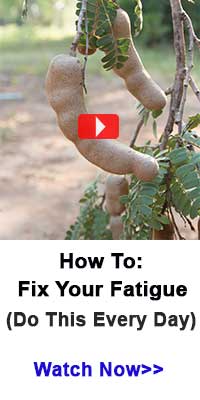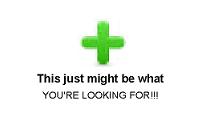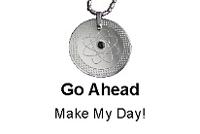I love how the exams in the 1800s would say: Draw your state map, it's principal rivers, and exports, along with the governor's name.
I like this exam: common law, conveyancing, and equity divisions:
A digest of the questions asked at the final examination of articled clerks in the common law, conveyancing, and equity divisions from the commencement of the examinations in 1836 to the present time [1886], with answers arranged as far as practicable in the same order as the text books from which they are taken : also a list of statutes referred to and cases cited, with a time table in an action, and the mode of proceeding, and directions to be attended to at the examination, with the rules of the honours examination : Hallilay, Richard : Free Download, Borrow, and Streaming : Internet Archive
Exam from 1875: The New York state examination questions: : New York (State) Dept. of public instruction. [from old catalog]: Internet Archive
Exam from 1824: A course of examinations on anatomy and physiology, surgery, chemistry, materia medica, midwifery, and the practice of medicine: adapted to the University of Pennsylvania, and the other medical schools in the United States
=======
from Biennial Report of the State Superintendent of Free Schools of the State of West Virginia, 1894.
How fast can you take the STATE BOARD EXAMINATION QUESTIONS FOR 1894?
Orthography.
1. Define elementary sound. How many in all. How are they produced?
2. In the following line mark semi-vowels thus, /; labials, \; linguals, |; sub-vocals, --
"Twas ever thus from childhood's hour."
3. Indicate the diphthongs in the following words: toil, mean, loud, crowd, coat, lien, bean, poison, question, doing.
4. What effect is produced on the primitive by the following prefixes: equi, bi, anti, at, ex, sub, tri, stereo, omni? Illustrate by examples.
5. Explain the force of the following suffixes; ity, ible, an, ite, ess, ship, hood.
6. Spell caution, suburban, excelled, caboose, nucleus, allows, callous, cistern, guttural, Cincinnati, subscription, Lucile, agricultural, susceptible, separate, pauperism, musings, academy, controversy, Switzerland.
Reading.
The lesson for the examination will be Drake's poem "The American Flag."
(Examiner will provide a copy for the use of the applicant)
1. Read the entire poem to the examiners.
2. Indicate by diacritical marks the proper pronunciation of the following words, also illustrate their meaning and use by using them in original sentences: azure, gorgeous, baldric, celestial, symbol, majestic, harbinger, meteor, mouthings, cowering, careering, welkin.
3. Explain the meaning of (a) monarch of the cloud, (b) robe of night, (c) eagle bearer, (d) thunder drum of heaven, (e) rainbows on the cloud of war, (g) gory sabers rise and fall, like shoots of flame on midnight's pall, (h) the broad side's reeling rack.
4. Paraphrase the last two stanzas.
Writing.
1. Make a set of capital letters.
2. Make a set of small letters.
3. Make the nine digits.
4. Copy the following:
"Far along
From peak to peak the rattling crags among,
Leaps the live thunder! Not from one lone cloud,
But every mountain now hath found a tongue,
And Jura answers through her misty shroud,
Back to the joyous Alps who call to her aloud."
Arithmetic.
1. A pole the length of which was 68 feet, was in the air and water; 3/4 of the length in the air equalled 2/3 of the length in the water. What was the length of each part? (analyze).
2. A. B. and C. together dig 105 bushels of potatoes in 1 day. A. can dig 1/2 as many as B, and B 1/2 as many as C. How many can each dig in a day? (analyze)
3. Find volume of a square pyramid of which each side of the base is 5 feet and the altitude 21 feet.
4. If 18 men in 15 days build a wall 10 rods long, 5 feet high, 4 feet thick, in what time can 20 men build a wall 87 rods long, 8 feet high and 5 feet thick?
5. No interest having been paid, find the amount due in three years on a note for $800 at 8 per cent. payable annually.
6. Find the length of the minute hand whose extreme point moves 4 inches in 3 minutes.
Grammar.
1 When the love of wealth had crept
2 into the city of Sparta and had after
3 wards introduced luxury, avarice, indolence,
4 effeminacy, profusion and all those
5 pleasures which are generally the
6 inseparable attendants of riches; and when
7 these had broken down all the strong barriers
8 which the wisdom of Lycurgus had formed
9 with the view of excluding them forever,
10 Sparta beheld herself fallen from her an-
11 cient glory and power, and was reduced
12 to an abject and humble state, which
13 continued to the reign of Agis and Leonidas,
14 of whom we are to treat --Rollins.
1 Classify the following clauses: (a) "which are attendants;" (b) "these had broken;" (c) "Sparta beheld;" (d) "we are to treat."
2 Give modifiers of, (a) "had broken;" (b) "barriers."
3 Give syntax of (a) “which," (line 8); (6) "then,” (line 9).
4 Give syntax of, (4) "pleasures" (line 5); (b) "attendants" (line 6).
5 Give the terms of the relation expressed (a) by the preposition "of" (line 9); (b) "of" (line 14).
6 Give the clauses connected by (a) "when" (line 1); (b) “and”. (line 6)
7 Select a participle (a) used as an adjective; (b) used like a noun.
8 Parse "was reduced" (line 11).
9 Decline the pronouns found in lines 10 and 14.
Physiology.
1. (a) Of what is bone composed? (b) How does the composition vary with age? (c) How does the blood circulate through the bones?
2. Describe three kinds of joints, and give example of each.
3. (a) Name two kinds of muscles. (b) How are muscles attached to the bones? (c) Explain how muscles act.
4. (a) How does exercise effect the muscles? (b) When should exercise be taken? (c) What kind of exercise is best?
5. (a) Describe the structure of the skin. (b) Name the glands of the skin. (c) Mention three functions of the skin. (d) State four common causes of colds.
6. (a) What is the object of respiration? (b) What are the principal organs employed? (c) How should a school room be ventilated in winter?
7. (a) Do children need more or less air space than adults? (b) Why?
8. (a) Name the organs of circulation. (b) Of what is the blood composed? (c) What is meant by coagulation? (d) What purpose does it serve?
9. What is the pulse? (b) Why is the pulse not felt in the veins?
10. (a) Name the three varieties of food. (b) Name the fluids, which aid in digestion. What is the effect of alcohol on digestion?
History.
1. With what discoveries or explorations are the following names connected: Balboa, Menendez, Drake, Champlain?
2. What were the "Navigation Acts" of England, and what was their effect on the Colonies: (a) With regard to commerce? (b) With regard to political feeling?
3. Name the thirteen original States.
4. Who was the first President of the United States, and when did his service as such begin? When end?
5. Name three wars in which the United States have been engaged. State whose administration each was under, and the result of each.
6. Give an account of John Brown's insurrection.
7. Who was the author of the Omnibus bill? Who rendered the Dred Scott decision? Who issued the Emancipation Proclamation?
8. When and where was the first gun of the rebellion fired, and when and where was the battle fought, which virtually closed the war?
9. What led to the impeachment of Andrew Johnson?
10. How, when and from what nation was Louisiana acquired? Florida? California? Alaska?
Geography.
1. Name and locate the four largest cities of the United States? To what do you consider the growth of each chiefly due?
2. State an important geographical fact concerning each of the following: Venice, Iceland, Gibraltar, Java, Oregon, Texas, Nicaragua, Amazon.
3. What and where is Hawaii? What particular interest attaches to it at the present time?
4. What is meant by the meridian of a place? What is the ecliptic? Define isothermal lines.
5. If you were standing at the equator at noon to-day, in what direction would your shadow fall? Give reason for your answer.
6. Write a brief sketch of the geography of West Virginia, including (a) Position and extent, (b) Natural features, (c) Products, (d) Navigable rivers, (e) Railroads, (f) Manufacture[r]s, (g) Capital and chief cities.
7. Locate the county in which you reside, and state the most important geographical facts in regard to it.
Bookkeeping.
1. Write (a) a negotiable promissory note; (b) a sight draft.
2. What is a chattel note? A collateral note?
3. Rule Day Book, Cash Book and Ledger, and enter the following transactions correctly:
May 1st, 1894. James B. Russell commences business with no capital. He purchases goods of Henry J. Ramsey on account as follows: 50 lbs. flour @ $4.75; 100 bags meal @ $1.33; 1 hhd. molasses, 147 gal. @ 42c.
May 2. Sold John Wood, for cash, 5 bbls. flour @ $5.00; 10 bags meal @ $1.40; 10 gals. molasses @ 50c.
May 5. Sold David Bean on account, 5 bags meal @ $1.42; 5 gals. molasses @ 52c.
May 7. Bought of Henry J. Ramsey, on account, 100 bu. potatoes @ 87 c.; 50 bu. apples @ 1.25.
May 9. Sold Luther Malone 10 bu. potatoes @ $1.00; 5 bu. apples @ 1.35; 5 gals. molasses @ 52c. He pays cash $10.00. The balance remain on account.
May 12. Sold Michael J. Colby on account,. 10 bbls. flour @ $5 10; 12 bags meal @ $1.42; 15 gals. molasses @ 52c. 5 bu.; potatoes @ $1.00.
May 15. Received cash of David Bean to balance account.
May 18. Paid Henry J. Ramsey cash on account, $45.00.
May 19. Sold Luther Malone on account, 10 bags meal @ $1.42; 7 bu. potatoes @ $1.00.
May 25. Sold Samuel Newell for cash, 8 gals. molasses @ 50c.; 6 bbls. flour @ $5.00; 15 bags meal @ $1.40; 10 bu. apples @ $1.35.
May 30. Paid Henry J. Ramsey cash on account, $60.00.
Civil Government.
1. The responsibility for the acts of the Government rests with the people. Give one argument for the truth of this statement.
2. (a) Of what two branches is Congress composed? (b) For how long a term are the members of each branch elected? (c) By whom are the members of each branch chosen?
3. (a) What is meant by import duties? (b) excise duties? (e) income tax?
4. State one reason for exempting certain kinds of property such as churches and hospitals, from taxation.
5. What prevents the President from becoming autocratic and tyrannical in his exercise of authority?
6. (a) What officers in this State correspond to the cabinet officers of the United States? (b) How do they differ as to the source of their right to the office.
Theory and Practice.
1. What have been your educational advantages? What experience in teaching have you had?.
2. What is meant by object teaching? To what extent should it be used?
3. What is meant by the "Word Method" of teaching Reading?
4. Outline a schedule of daily work. In preparing such a schedule what considerations should govern in arranging the classes of primary pupils?
5. What do you understand by the term "New Education"?
6. Give the names of five men who have been prominent in educational work in the United States.
School Law.
1. Describe the steps to be taken to increase the length of school term in a district.
2. Name six duties of the Board of Education.
3. Name five duties of a Board of Trustees.
4. (a) Give a list of the text-books required by law to be used in our free schools; (b) What is the penalty for using any other book? 5. In what way may a district be deprived of its share of the State school fund?
6. Who is at the head of the Public School work in this State? How chosen? Compensation? Length of term? Name the present incumbent.
7. (a) Name the holidays in the State. (b) What is meant by "Arbor Day?"
Rhetoric.
1. Define, (a) rhetoric, (b) invention; (c) style.
2. What are the qualities of a good subject?
3. What are the usual parts of a composition?
4. What are the rules for enlarging ones vocabulary?
5. Define (a) purity; (b) propriety; (c) precision,
6. What are the rules for clearness?
7. Define "figure of speech;" name the classes into which figures are usually divided.
8. Define (a) simile; (b) metaphor; (c) personification; (d) allegory; (e) synecdoche; (f) metonymy; (g) hyperbole; (h) apostrophe; (i) climax.
9. Write thirty lines on a subject given by Examiner.
Algebra.
1. Illustrate the use of (a) index; (b) exponent; (c) radical sign.
2. If a:b :: x:y, prove a+b/a-b :: x+y÷x−y.
3. If I loan my money at 6% for a given time, I shall receive $720 interest; but if I loan it for three years longer, I shall receive $1,800. Find principal and time.
4. (1-(x^2/y^2 - y^2/x^2)/(x^2/y^2 - y^2/x^2))*((x^3/y^3)+(y^3/x^3)) find its value.
5. 1/x + 1/y=5; 1/y + 1/z=7; 1/x + 1/z=6; find x, y and z.
6. Multiply x^3 - y^3 + x - (3/2y) - 3/2 by x^3 + y^3.
7. Simplify 4√3+√(7&1/3)-5√(1&1/3).
8. {(6/x)+x}^2+{(6/x)+x}=30; find x.
9. Find two numbers whose sum, product and difference of their squares are all equal.
10. Form equations whose roots are 2/3 and 3/4.
Physics.
1. Define matter. Distinguish between general and specific properties of matter. Name and define the general properties of matter.
2. Define gravity; center of gravity; specific gravity.
3. Name the elements of machines. Give the law of equilibrium for the screw.
4. Give four laws of equilibrium of liquids.
5. Describe the bottle imps, and explain why they sink and rise.
6. Give three laws for vibration of cords. What determines the pitch in the pipes of an organ?
7. Define the following: Visual angle; reflection of light; refraction of light; aberration of light; mirage; solar spectrum.
8. Make figures of lenses which cause rays of light to converge. Of those that have an opposite effect.
9. Describe the compass. What and where is the line of no variation?
10. Explain the Electro-Magnetic Telegraph.
Psychology.
1. Have you made a formal study of Psychology? If so, what text-book have you used?
2. Explain the difference between the terms "Sensation" and "Perception."
3. What are the products of the Intuitive faculty?
4. What is a concept? State the psychical steps in the formation of concepts.
5. Define "Judgment" as a mental faculty. What is a judgment? What is the language expression of a judgment?
6. What is reasoning? Explain the difference between inductive and deductive reasoning.
7. Outline "The Sensibilities."
8. What should be the result sought in training the will? What is meant by "breaking a child's will?" Should it ever be done? Why?
: (ALIAS) VAL THOR
: @CMDRVALTHOR
: This was the 8th grade exam to move on to the next grade in
: 1912. How does this compare to what is taught at our
: schools today?
: Ю


